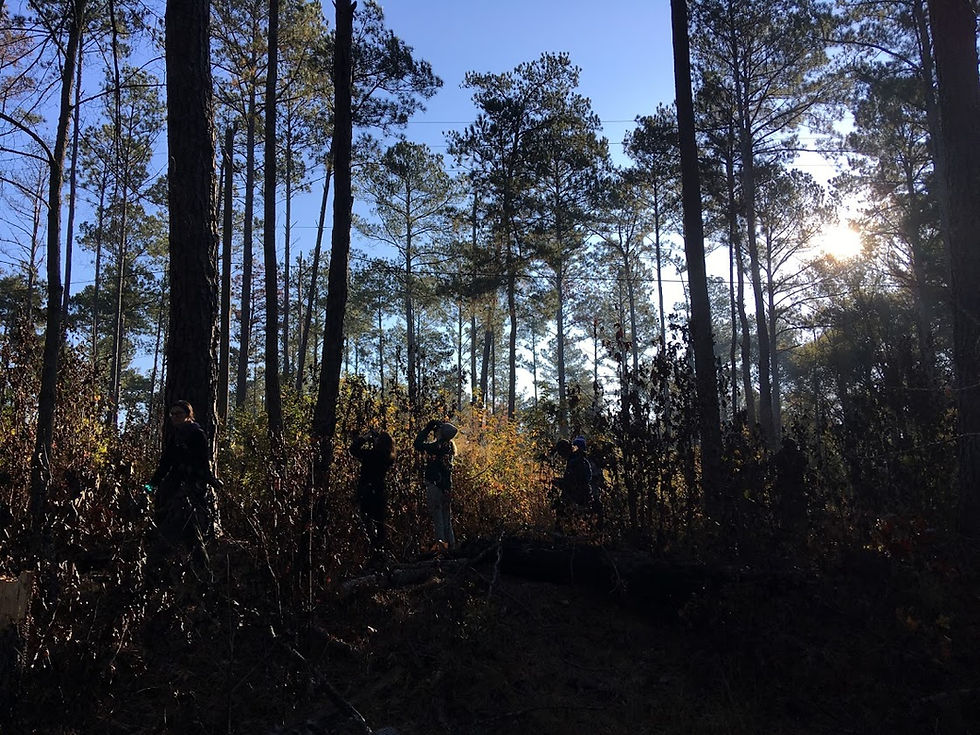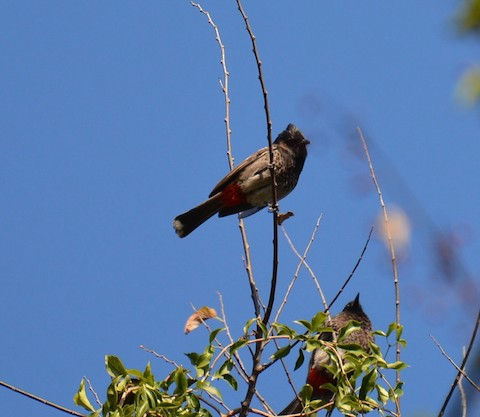The Guitar Gods Were Happy, The Bird Gods Were Not
- pnkleinhenz
- Jul 14, 2020
- 5 min read
When you're in a long distance relationship, you end up really getting to know the place where your significant other lives. That's the way I feel about Athens, Georgia. I'd always heard great things about it, but hadn't gotten to know it prior to meeting Heather. I love that place and one of the things I love most about it is its music.
Widespread Panic, one of my favorite bands, got their start in Athens and their current lead guitar player, Jimmy Herring, is my favorite guitar player. He had a show in Athens and, so, it was a no-brainer to head up there again. With only two months left of the big year, it was increasingly apparent that we were going to have a tough time hitting our goal of 500 species. But we had to keep trying. This would be a good weekend, regardless of whether we got our target birds or not.

After a wild night, Nate, Heather, and I hopped in the car to drive to Atlanta and do some birding and run some errands. We stopped first at trusty old Roger's Bridge Trail. Golden-winged Warbler and Eastern Screech-Owl had been reported in recent days, so it was worth the out-of-the-way venture. It's always a fun place to explore and, although we didn't get any targets there, we enjoyed some up-close views of deer and had a nice walk.

Snow and Ross' Geese were reported from right in urban Atlanta, near the Chattahoochee River. The Roswell Riverwalk was a nice boardwalk that passed not only the river, but also some healthy wetlands. We were confident that we would see the white, large geese from far away. They had been reported every day for over a week. As luck (or a lack thereof) would have it, our visit occurred on the first day that they weren't reported. We can't stress enough how unlucky we are.

We ran our errand and, though the birds were not cooperating this day, we still had high spirits. Our friend, T.J., met us back at Heather's place and we prepared for a night of great music. The show was fantastic, and the fun continued long into the night. As a result, the next morning came way too quickly. Heather and I had rsvp'd to participate in a Lilly Branch Audubon Society field trip to Sandy Creek Nature Center that began at 8. Despite the cold temperatures and our extreme levels of tiredness, we fulfilled the commitment and made it to the walk.

I'm glad that we did. Some gorgeous Red-headed Woodpeckers met us in an open pine forest that has received prescribed fire in the past. How cool is it than prescribed fire is practiced so close to urban Athens?! Certainly, the birds appreciate it. In addition to Red-headed woodpeckers, we saw Downy, Hairy, and Red-bellied Woodpeckers along with Yellow-bellied Sapsuckers and Northern Flickers. The only woodpecker missing was the Pileated Woodpecker! This was a treat in and of itself, considering the fact that woodpeckers are among my favorite birds.
Brown-headed Nuthatches called from the trees, which always guarantees some excitement from Heather who studied them down at Tall Timbers. I was excited to see and hear a Field Sparrow, as this is one that Heather and I had seen a couple of times in Georgia. If there's one thing the Big Year did, it was heighten my love of sparrows. Song, Chipping, and White-throated sparrows also made appearances and, in the case of the White-throateds, graced us with their lovely songs.

We went from the upland pines down into the bottomlands along Sandy Creek itself. Golden-crowned Kinglets, a rare bird in Florida and one we don't often see, were everywhere, as were their ruby-crowned cousins. We were targeting another small bird like these, but started to get worried that we wouldn't see it. You see, we sought the aptly-named Winter Wren which only visits the South during, well, winter. We were only in mid-November and had missed them all last winter. But then we saw a few Hermit Thrushes, a sign that winter birds were indeed arriving. We started to notice a bunch of dense brush thickets near some swamp areas as we walked, and I began to think we'd have a chance to get a Winter Wren. Winter birds had arrived, the habitat started to look good, and we had a lot of eyes looking.
Then we heard it. The complicated song of the Winter Wren seemed to be emanating from a brush area by a fallen log not far away. We all trained our binoculars onto the log and it wasn't long before we saw it skulking along at the base of the log! This one was exciting. Not only are Winter Wrens super-cute, but this was one we were sure that we wouldn't get. And there it was. A new species at last!
Ultimately, we saw three more Winter Wrens, all acting similarly and occupying similar niches. Learning where you would expect to see a bird is so helpful, and it certainly paid off in this case.
We stood by a large beaver pond, looking out over the water. Some Canada Geese and Red-winged Blackbirds kept us occupied, until a huge flock of blackbirds flew in. Something didn't seem quite right with them, and we were astonished to see that they were all Rusty Blackbirds! While these birds aren't much to look at, they are a fascinating species and one that is declining like crazy. Habitat loss is certainly playing a part, but there's likely also some other, as-yet-unknown, cause at play. They are definitely not common in the Athens area, and we saw 24 of these neat birds fly in to bathe and feed near the beaver pond. What an unexpected treat!
Heather and I had to dip out a little bit early to check on Nate and T.J. and grab some brunch, so we said goodbye to our friends. Patrick Maurice, a young birder and UGA student, did an excellent job leading our walk and we both hoped we'd get more opportunities to bird with him. Check out his eBird checklist for some of his excellent photos from the field trip!
After a brunch that was equal parts hilarious and embarrassing, Nate and T.J. left us. Heather and I weren't done birding quite yet, and so we decided to hit some farm fields nearby. We stopped first at Apalachee Road farm pond to look for a Ross' Goose that had been seen there recently. No Ross', of course, but we did get to see 6 Hooded Mergansers which is always a treat.
For what seemed like the millionth time, we tried the Bostwick Sod Farm for Horned Larks. But nope. None. They had been seen so, so often before we got there. But the white whale stayed underneath the surface. Some Eastern Meadowlawks made the trip out there worth it, though, as did the resident Loggerhead Shrike that lives in one of the last trees standing in the sod farm. If anything, these birds reminded us that even the smallest habitat remnants can sustain interesting birds if we let them. That lesson was ingrained, as was the lesson that sometimes it just ain't about that target bird.







Comments